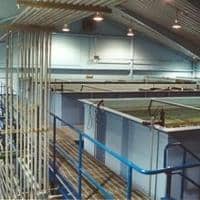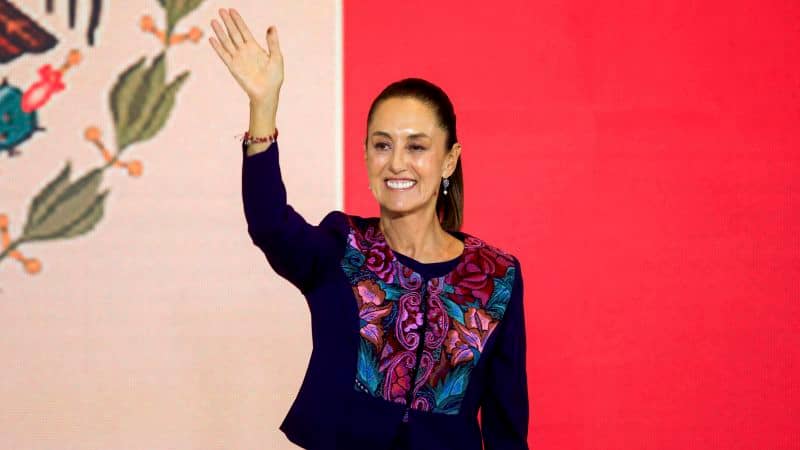America is great because of its willingness to accept talented immigrants. That’s what Nandan Nilekani, the billionaire co-founder of Infosys Technologies, would tell President Trump if he had the opportunity. “If you
Turn Your Rising Home Equity Into Cash You Can Use

Turn Your Rising Home Equity Into Cash You Can Use
Don't Miss
CNN — Ferrari’s miserable season has gone from bad to worse as the Italian manufacturer failed to get either car
Rising star Atthaya Thitikul eyes major 2023 Source link
Pecco Bagnaia: MotoGP’s rising Italian star Francesco “Pecco” Bagnaia is a rising Italian MotoGP star and racing has been part
A summer of extreme heat and drought around the world has been a reminder that water scarcity is a pressing issue and one that will only get worse with climate change. Already, more than two billion people worldwide lack easy access to clean water, according to the World Health Organization (WHO).
For some countries, desalination plants offer a solution – removing salt from seawater to satisfy their freshwater needs. The Middle East has the highest concentration of these in the world. But such plants, still mostly powered by fossil fuels, are energy-intensive and the process creates an extremely salty wastewater known as brine, which can damage marine ecosystems and animals when it’s pumped back into the sea.
That’s why some startups and researchers are updating centuries-old solar still technology, which uses only sunlight to purify water. While the technology is still a long way off from producing the volume of freshwater generated by desalination plants, it could prove valuable for off-grid or coastal communities.

Abu Dhabi-based startup Manhat, founded in 2019, is developing a floating device that distills water without requiring electricity or creating brine. It consists of a greenhouse structure that floats on the surface of the ocean: sunlight heats and evaporates water underneath the structure – separating it from the salt crystals which, are left behind in the sea – and as temperatures cool, the water condenses into freshwater and is collected inside.
Manhat wants to use its desalination devices for agriculture, creating floating farms surrounded by multiple devices for on-the-spot irrigation, as shown in this rendering. Credit: Manhat
“It’s really similar to the natural water cycle,” says Dr. Saeed Alhassan Alkhazraji, the company’s founder and associate professor at Abu Dhabi’s Khalifa University. He says solar evaporation has long been used for this purpose, but typically it involves putting water in a basin where, once the water has evaporated, salt is left behind.
Unlike traditional solar stills, Manhat’s device floats in the ocean, drawing water directly from the sea. Salt does not accumulate in the device and the angle of the collection cylinder prevents water droplets evaporating back to the sea, says Alhassan.
Earlier this year, Manhat’s patented technology won the Water Europe Innovation award for small and medium enterprises with breakthrough solutions in the water sector, commended for its ability to produce freshwater with “zero carbon footprint and zero brine rejection.”
The startup plans to harness its technology in floating farms, which would use its desalination devices to provide freshwater irrigation for crops without the need for water transportation and its associated emissions.
This would benefit arid coastal areas where land is intensively farmed, says Alhassan. “If you produce (fresh) water on the sea’s surface and use it for farming, you can effectively allow arable land to be rejuvenated,” he says, adding that the technology could work well for countries like the Maldives that have little land available for desalination plants.
Others have also been innovating with solar stills. In 2020, researchers at the Massachusetts Institute of Technology (MIT) developed a free-floating desalination unit consisting of a multilayer evaporator that recycles the heat generated when the water vapor condenses, boosting its overall efficiency.
While field tests are ongoing, it was touted as a technology that could “potentially serve off-grid arid coastal areas to provide an efficient, low-cost water source.” Researchers suggested it could be configured as a floating panel on the sea, delivering freshwater through pipes to the shore, or it could be designed to serve a single household, using it atop a tank of seawater.
Geoff Townsend, who works on innovations in water scarcity for water treatment and hygiene company Ecolab, believes that while solar still innovations are unlikely to replace conventional desalination, they could “supplement existing technology, reducing the overall carbon footprint of desalination.”
But he cautions that “desalination typically needs to provide a very predictable supply of water,” and that “there will be potential concerns on the extent to which diurnal (daily) and seasonal changes in performance could impact the ability to achieve the minimal production requirement.”
An even bigger challenge for this kind of technology is scale. “A drawback is their intrinsic low efficiency,” says Townsend, adding that they tend to take up a lot of space for the small amount of water they produce.
MIT’s device was found to produce around five liters of freshwater per hour for every square meter of solar collecting area. Manhat’s current floating prototype, which covers 2.25 square meters but only has one square meter open to water, produces 1.5 liters of freshwater per day – a drop in the ocean, considering the World Health Organization estimates that an average person needs at least 50 to 100 liters a day to be healthy
Alhassan says Manhat is working to increase this volume to five liters by optimizing materials and design, with the long-term goal of reaching at least 20 liters. The startup has raised $130,000 in funding so far, predominantly via a collaboration with Abu Dhabi Ports, but with increased investment he is confident these targets can be met.
A pilot of the floating farm concept will begin next year. By linking up multiple modular devices in a grid formation, Manhat believes that its current technology could provide enough desalination to grow less water-intensive crops, such as mushrooms, and as the devices improve they could start targeting other crops such as lettuce or tomatoes.
Despite the challenges, Alhassan believes solar stills will one day become an important source of freshwater. “We have to accept the fact that seawater should be a key player in providing freshwater,” he says. “But we need to have a solution that will minimize CO2 emissions and eliminate brine altogether.”
Don't Miss
LAKE GEORGE — The Village Board is expected to announce a moratorium on any new commercial property water hookups in
CNN — Although Nigeria has vast energy reserves, more than 92 million people in the country live without access to
CNN — At the far southwestern tip of England, dangling into the Atlantic, the remote region of Cornwall rarely feels
‘America First’ could turn into ‘India First’

America is great because of its willingness to accept talented immigrants.
That’s what Nandan Nilekani, the billionaire co-founder of Infosys Technologies, would tell President Trump if he had the opportunity.
“If you really want to keep the U.S. … globally competitive, you should be open to overseas talent,” Nilekani said on the sidelines of CNN’s Asia Business Forum in Bangalore.
Infosys (INFY) is India’s second-largest outsourcing firm, and a major recipient of U.S. H-1B visas. The documents allow the tech firm to employ a huge number of Indians in U.S. jobs.
The Trump administration is now considering significant changes to the visa program. Press Secretary Sean Spicer said in January that Trump will continue to talk about reforming the H-1B program, among others, as part of a larger push for immigration reform.
Curbs on the visas could hit Indian workers hardest.
India is the top source of high-skilled labor for the U.S. tech industry. According to U.S. government data, 70% of the hugely popular H-1B visas go to Indians.
Shares in several Indian tech companies — including Infosys — plunged spectacularly two weeks ago amid reports of an impending work visa crackdown.
Related: Tech industry braces for Trump’s visa reform
Nilekani said it would be a mistake for the administration to follow through.
“Indian companies have done a great deal to help U.S. companies become more competitive, and I think that should continue,” Nilekani said. “If you look at the Silicon Valley … most of the companies have an immigrant founder.”
India’s contribution to the industry — especially at top levels — has been outsized. The current CEOs of Google (GOOG) and Microsoft (MSFT), for example, were both born in India.
Related: India freaks out over U.S. plans to change high-skilled visas
But Nilekani, who is also the architect of India’s ambitious biometric ID program, suggested that India would ultimately benefit from any new restrictions put in place under Trump’s “America First” plan. If talented engineers can’t go to the U.S., they will stay in India.
“This issue of visas has always come up in the U.S. every few years, especially during election season,” he said. “It’s actually accelerated the development work [in India], because … people are investing more to do the work here.”
Nilekani cited his own projects for the Indian government as an example.
The Bangalore-born entrepreneur left Infosys in 2009 to run India’s massive social security program, which is known as Aadhaar. As a result of the initiative, the vast majority of India’s 1.3 billion citizens now have a biometric ID number that allows them to receive government services, execute bank transactions and even make biometric payments.
“It was built by extremely talented and committed Indians,” Nilekani said. “Many of them had global experience, but they brought that talent and experience to solve India’s problems.”
Nilekani said the country’s massive youth population is increasingly choosing to stay home and pitch in.
“It’s India first,” he said.
CNNMoney (Bangalore, India) First published February 13, 2017: 2:19 PM ET
Don't Miss
Presidential candidate Xóchitl Gálvez waves to supporters during an election campaign rally in Tarimbaro, Michoacan state, Mexico, on April 21.
LAKE GEORGE — The Village Board is expected to announce a moratorium on any new commercial property water hookups in
Chris Kirk speaks to CNN after first PGA Tour win in 8 years American golfer Chris Kirk had won four













